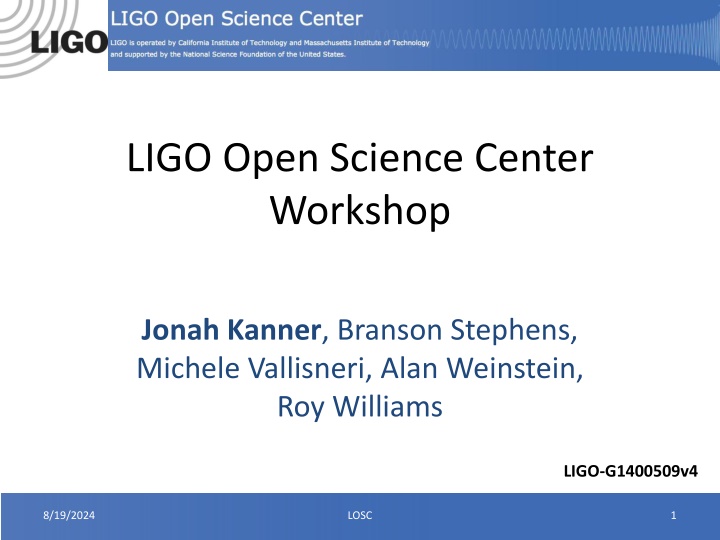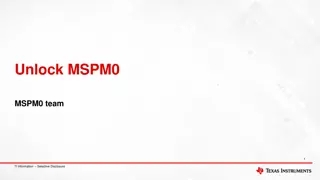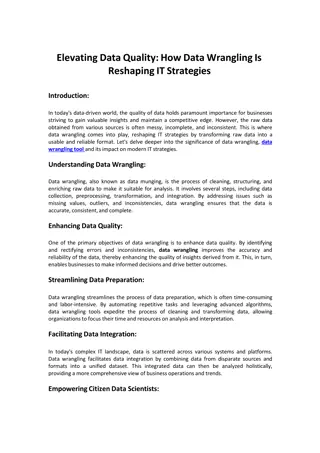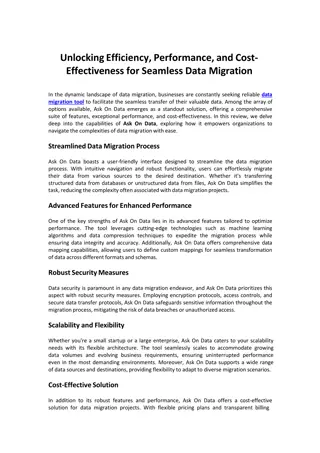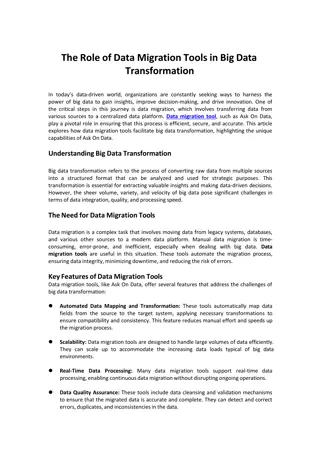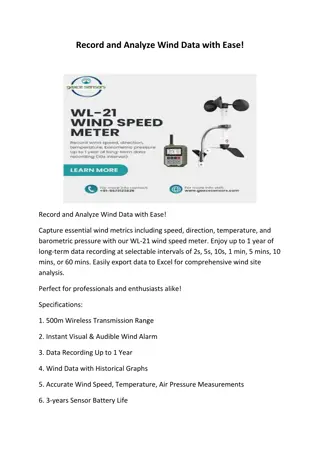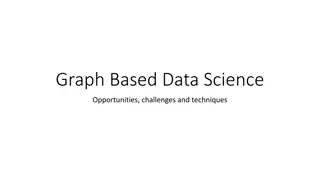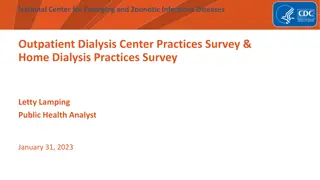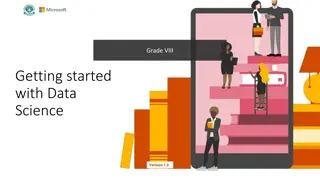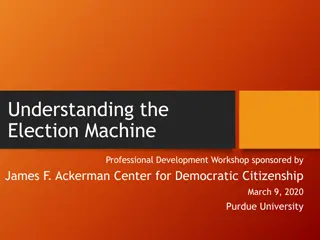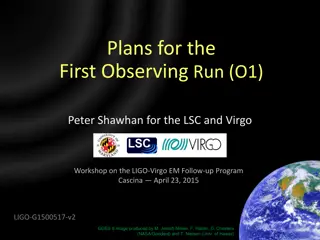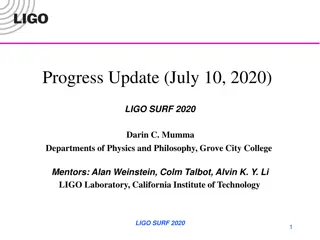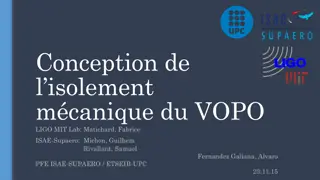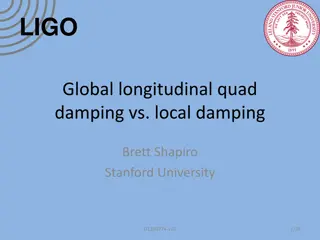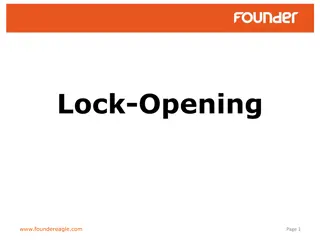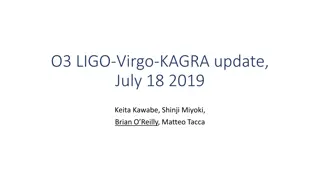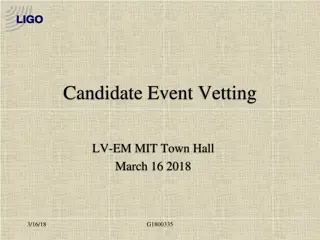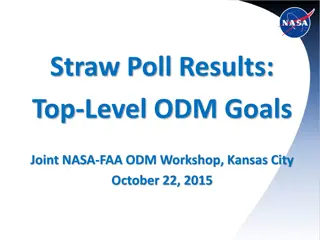Unlocking LIGO Data with Ease at LIGO Open Science Center Workshop
Dive into accessing LIGO data effortlessly at the LIGO Open Science Center Workshop. Learn about software setup, finding data with Timeline, and accessing valuable resources for new students and experienced researchers alike. Explore complete documentation, tutorials, and compatibility with various programming languages such as Python, Matlab, and C. Get started today for a seamless journey into the world of gravitational wave science.
Download Presentation

Please find below an Image/Link to download the presentation.
The content on the website is provided AS IS for your information and personal use only. It may not be sold, licensed, or shared on other websites without obtaining consent from the author.If you encounter any issues during the download, it is possible that the publisher has removed the file from their server.
You are allowed to download the files provided on this website for personal or commercial use, subject to the condition that they are used lawfully. All files are the property of their respective owners.
The content on the website is provided AS IS for your information and personal use only. It may not be sold, licensed, or shared on other websites without obtaining consent from the author.
E N D
Presentation Transcript
LIGO Open Science Center Workshop Jonah Kanner, Branson Stephens, Michele Vallisneri, Alan Weinstein, Roy Williams LIGO-G1400509v4 8/19/2024 LOSC 1
Why LOSC? Access data with ease No need to login to LDAS cluster Point and click download of LIGO data Complete documentation and tutorials Easy start-up for new students Everything we do today (and more!) in online tutorials Easy access to segment and DQ information Load data in GW Frame or HDF5 format LSC software stack is optional Compatible with Python, Matlab, C, and many others 8/19/2024 LOSC 2
Step 0: Software Setup Workshop assumes you have installed python, along with h5py, numpy, matplotlib Software set-up instruction is at: https://losc.ligo.org/tutorial00/ Create a directory for this workshop Let s call it workshop Download the LOSC API, readligo.py, to the workshop directory: https://losc.ligo.org/s/sample_code/readligo.py 8/19/2024 LOSC 3
Step 1: Find data with Timeline Timeline contains segment information DATA available, Data Quality, and injections Timeline can be used to: Find times of good (or bad) data quality Learn when GW detectors were running Download segment lists Download LIGO data files 8/19/2024 LOSC 4
Step 1: Find data with Timeline Go to the S5 Data Page: https://losc.ligo.org/S5/ Click S5 Timeline Query Form near the bottom Enter a start time of 843895500 Enter a duration of 3600 Choose the Plot option Choose the H1_CBCHIGH_CAT2 and H1_HW_BURST flags Click the link at the bottom to see the timeline 8/19/2024 LOSC 5
Step 1: Find data with Timeline Links to download segment lists and data The green curve shows the time of a burst hardware injection The red curve shows that this data passes CAT 2 flags for the CBC High mass search most, but not all, of the time. 8/19/2024 LOSC 6
Step 1: Find data with Timeline Can use buttons to zoom out to see all of S5 Click and drag on plot to zoom in on any time 8/19/2024 LOSC 7
Step 2: Download data From the timeline page, click the link for Get the strain data for H1 Each line represents 4096 s of LIGO data Click the links that say HDF5 to download the files Notice GW frame, or .GWF, format is also available Save the files to your workshop directory or a sub directory Directions for automated downloads are in the tutorials 8/19/2024 LOSC 8
Segment Lists Most data analysis projects start with a segment list May be times of SCIENCE mode data May also be times of passing some data quality level (For example, BURST_CAT2) LOSC provides segment information in 2 ways: Segment lists may be downloaded from web through Timeline (See Slide 6) OR Segment lists may be constructed from bit masks in LOSC data files 8/19/2024 LOSC 9
Step 3: Create a segment list Start python (or iPython, or Canopy, or Anaconda, or an iPython notebook) Make sure your working directory is the workshop directory you created Enter commands as a script in a text file Not directly in the interpreter Import the modules we ll use: import readligo as rl import numpy as np import matplotlib.pyplot as plt import matplotlib.mlab as mlab plt.ion() 8/19/2024 LOSC 10
Step 3: Create a segment list Define the times that you have downloaded data. dstart = 843894784 dstop = dstart + 4096 Use the LOSC API to create a segment list # -- Create a CBC High mass post CAT 2 segment list seglist = rl.getsegs(dstart, dstop, 'H1 ,flag='CBCHIGH_CAT2') print seglist Note: The data for the segment lists are contained in the files you already downloaded. There are no calls to a segment data base. 8/19/2024 LOSC 11
Step 4: Load LIGO data We ll write a loop over each segment in the list we just made # -- Load the data for each of the first 3 segments for (start, stop) in seglist[0:3]: strain, meta, dq = rl.getstrain(start, stop, 'H1') The variable strain now contains this segment of data as a numpy array You got the data. That s it! But, we ll work a few more examples just for fun 8/19/2024 LOSC 12
Step 4: Load LIGO data Now that we ve got a loop to load data, let s add a few lines to plot an ASD for each segment # -- Load the data for each of the first 3 segments for (start, stop) in seglist[0:3]: strain, meta, dq = rl.getstrain(start, stop, 'H1') #-- For each segment, plot the ASD fs = int(1.0/meta['dt']) Pxx, freqs = mlab.psd(strain, Fs = fs, NFFT=4*fs) plt.loglog(freqs, np.sqrt(Pxx), label=str(start)) # -- Make the plot look nice plt.axis([10, 2000, 1e-23, 1e-18]) plt.grid('on') plt.xlabel('Freq (Hz)') plt.ylabel('Strain / Hz$^{1/2}$') plt.legend() 8/19/2024 LOSC 13
Step 4: Load LIGO data 8/19/2024 LOSC 14
Hardware Injection Documentation The LOSC web site includes hardware injection documentation Burst, CW, Stochastic, and CBC Includes detailed lists of injection times & parameters Hardware Injection times are marked in data quality segments Tutorial with complete instructions for finding a CBC hardware injection https://losc.ligo.org/tutorials/ 8/19/2024 LOSC 15
Find a hardware injection We can use the LOSC segment information to find times of hardware injections The full list of S5 DQ flags is at: https://losc.ligo.org/archive/dataset/S5/ # -- Define a segment list of hardware injection times seglist = rl.getsegs(dstart, dstop, 'H1', flag='HW') print seglist 8/19/2024 LOSC 16
Find a hardware injection This is a burst hardware injection, so maybe it will show up in a spectrogram. We can load the data the same way we did earlier. # -- As before, load the data for each segment for (start, stop) in seglist: strain, meta, dq = rl.getstrain(start, stop, 'H1') # -- Make a spectragram of the data fs = int(1.0/meta['dt']) NFFT = fs/2 window = np.blackman(NFFT) spec_power, freqs, bins = mlab.specgram(strain, NFFT=NFFT, Fs=fs, window=window) 8/19/2024 LOSC 17
Find a hardware injection Before plotting the spectrogram, we ll normalize each frequency bin by its median power # -- Normalize each frequency bin to the median power in that bin for n in range(spec_power.shape[0]): spec_power[n] = spec_power[n] / np.median(spec_power[n]) # -- Plot the spectragram plt.figure() ax = plt.subplot(111) ax.pcolormesh(bins, freqs, np.log10(spec_power)) plt.xlabel('Time since GPS {0} (s)'.format(start)) plt.ylabel('Freq (Hz)') plt.axis([0, stop-start, 0, fs/2]) 8/19/2024 LOSC 18
Find a hardware injection 8/19/2024 LOSC 19
Find a hardware injection That looks like a bunch of injections. Can that be right? The LOSC website hosts complete injection information. Let s take a look, and see what we can find around this time 8/19/2024 LOSC 20
Hardware Injection Documentation Return to the S5 Data Release page: https://losc.ligo.org/S5/ Near the bottom, click the link for Burst Hardware Injections Find the annotated log for H1 S5 Burst Injections: HTML Scroll or search the table for times included on the plot (near GPS 843896420) Notice these tables can also be downloaded in machine readable formats 8/19/2024 LOSC 21
Hardware Injection Logs GPS IFO Waveform Scale Message SNR 8/19/2024 LOSC 22
Hardware Injection Logs The log confirms what we see in the spectrogram There is a series of Burst injections They are spaced in ~5 second intervals There are 2 sets of injections which each rise in frequency The SNRs are very loud (~100) Similar information is included for all 4 data analysis working groups 8/19/2024 LOSC 23
Summary The LOSC web site allows access to LIGO data with little or no training. Documentation includes: Data access Working with segments Basic data analysis techniques LOSC data is stand-alone Can be read with off-the-shelf tools Includes segment and DQ information LOSC data is available both on the CIT cluster and on your laptop 8/19/2024 LOSC 24
Everything you (or your students) need to get started is on the web https://losc.ligo.org/ Thank you! 8/19/2024 LOSC 25
Extra Slides 8/19/2024 LOSC 26
LOSC on the LIGO Data Grid LOSC data is currently available on CIT cluster LOSC Frame files can be accessed via ligo_data_find, exactly as other LIGO data Use LOSC API on LDG Access LIGO data with ease Move seamlessly between laptop and cluster https://losc-dev.ligo.org/tutorial_gmtd/ $ export PYTHONPATH=$PYTHONPATH:/home/losc/py $ ipython > import readligo as rl > strain, meta, dq = rl.getstrain(860000000, 860005000,'H1') 8/19/2024 LOSC 27
